The Secret Lives of Commercial Fishermen
Corey Arnold photographs Alaska’s largest and most threatened salmon run—and the people who depend on it
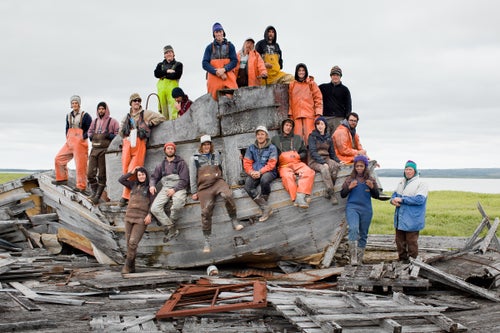
In the early 2000s, Corey Arnold worked on commercial fishing boats in some of the world’s most dangerous waters, taking photos of the job whenever he had the chance. Soon galleries and magazines were paying attention. In 2008, Arnold shot a story for ���ϳԹ��� in Bristol Bay, Alaska, about environmental threats from the proposed Pebble Mine. During that assignment, he discovered a seasonal fishing community at Graveyard Point, near the mouth of the Kvichak River, and established his own salmon operation. Though the EPA blocked the Pebble Mine in 2014, the agency reversed its decision in 2017, threatening Bristol Bay’s legendary salmon fishery. The photographs that Arnold, now 41, took over the past decade serve as a stark portrayal of an imperiled way of life. “The Kvichak is what the Columbia River was like 200 years ago—no dams, totally untouched by man, massive salmon runs,” he says. “The mine could destroy it.”For two months each summer, Arnold and his crew of five join 130 other fishermen to live in an abandoned cannery at Graveyard Point. “Natives, different religious groups, whole families, youngsters—it’s an amazing, makeshift community,” Arnold says. “I don’t see them for ten months, but when we come back together we’re like family.” Their future is uncertain, however: according to a three-year EPA study, Pebble Mine could decimate the 35 million salmon in the fishery. —Will Ford
Photo: Commercial fishermen from the Graveyard Point fish camp in Bristol Bay, Alaska posing aboard an abandoned "Monkey Boat" near the mouth of the Kvichak River.
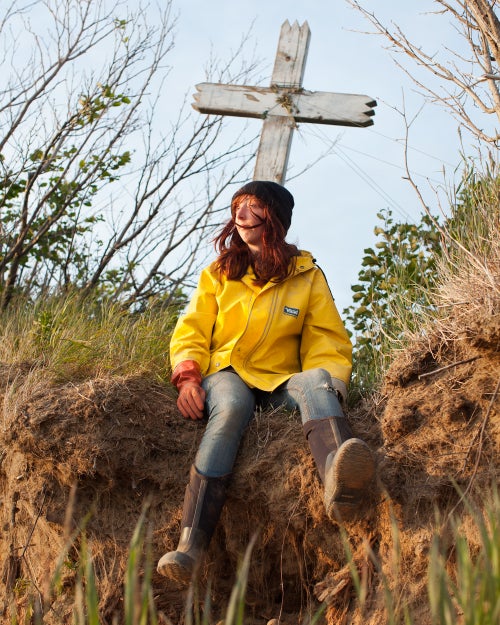
Martina Bailey, commercial salmon fisherwoman, sits on a bluff at Graveyard Point, Alaska where remains of an old cemetery are eroding into the sea.
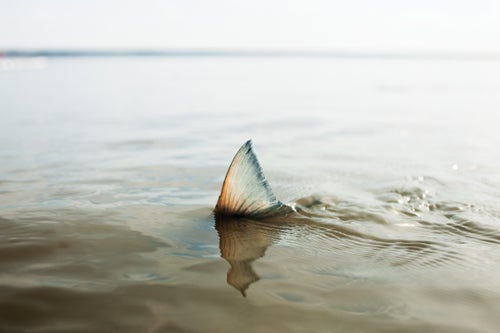
The tail fin of a Sockeye Salmon caught in a gillnet while commercial fishing in Bristol Bay, Alaska.
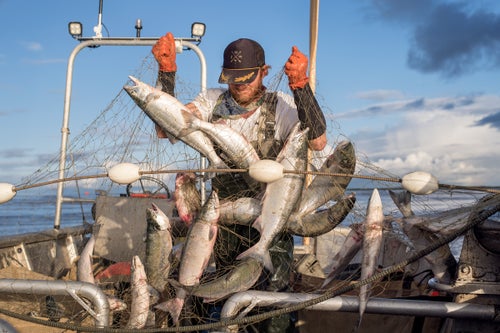
Deckhand Patrick Grugel sorting through a full gillnet of Sockeye Salmon in Bristol Bay.
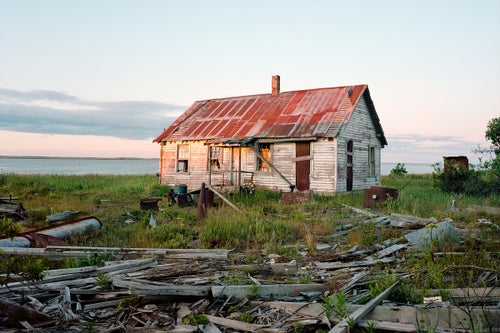
An abandoned building in Bristol Bay becomes a makeshift home in June and July for commercial Sockeye Salmon fishermen.
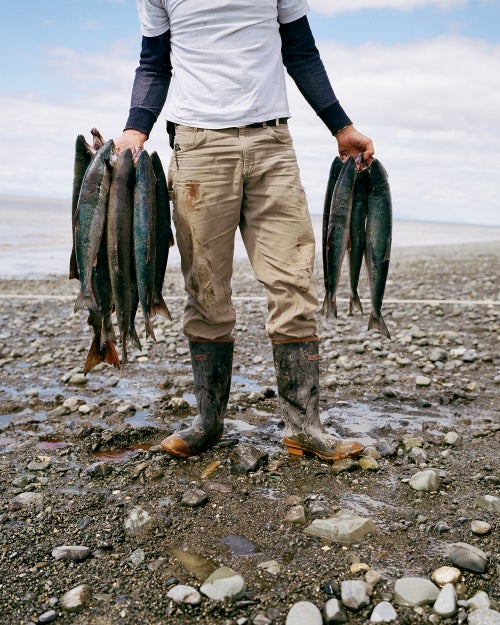
A fisherman holds a cluster of Sockeye salmon pulled from a set gillnet on the beach in Bristol Bay.
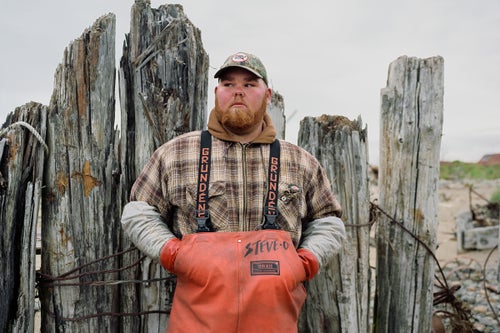
Graveyard Point fisherman Steve-O stands near a burnt down dock at the waters edge.
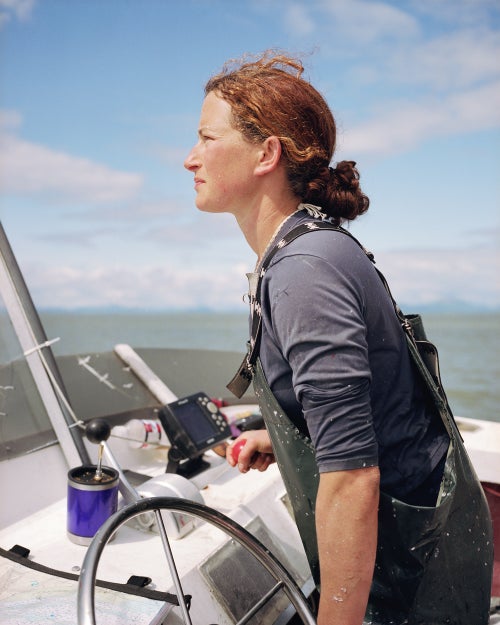
Lindsey Bloom, captaining a Bristol Bay gillnetter out of Naknek, Alaska.
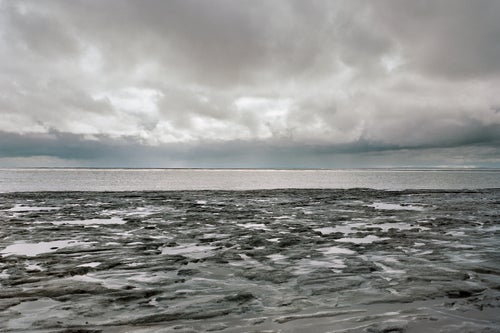
The tidal mud flat at low tide in Bristol Bay. Tides fluctuate from 10 to 30 feet of water and back every 12 hours or so in the Kvichak River delta.
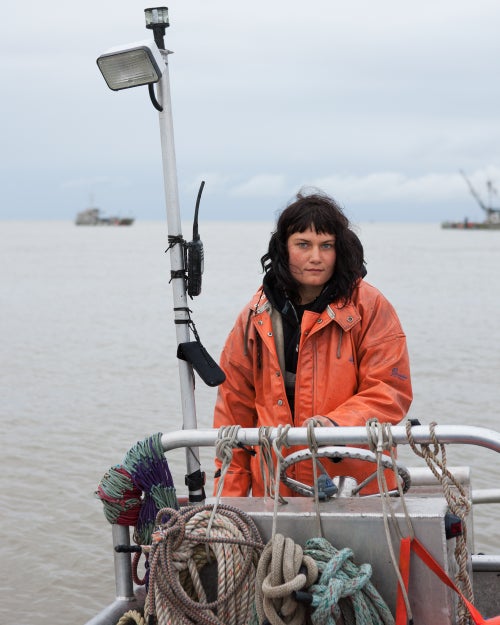
Arnold hired Billie Delaney in 2012, after getting to know her on other crews. She’s “one of the toughest people I’ve ever worked with,” he says. The 30-year-old now runs her own boat.